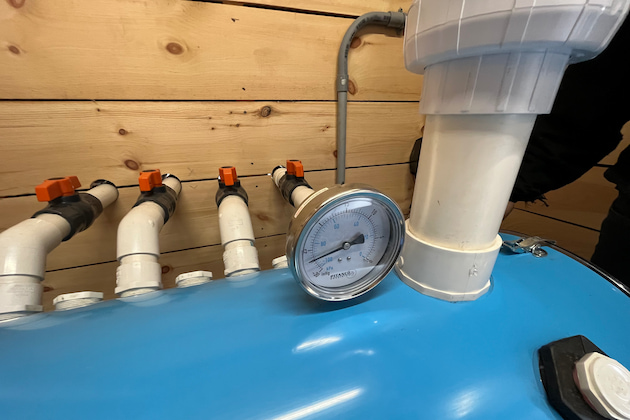Tapping & Tubing
Maxed out sap? Trees can handle it, say researchers
More sap to be pulled and growth rates not affected, so far
By PETER GREGG | JANUARY 5, 2023
UNDERHILL CENTER, Vt.—Are the trees maxed out on sap production? Not yet, say experts.
With several sugarmakers starting a season in November or December and pulling sap from the same trees and same tapholes all the way to late April with high vacuum running every single day, questions are being asked about the ultimate sap capacity of a tree.
“Are we at the limits of extraction? No, I don’t think we are there yet,” said Dr. Timothy Perkins, director of the UVM Proctor Maple Research Center, during an online Q&A session last month.
Dr. Abby van den Berg, also of the Proctor Center, concurred.
“There is a question of the reservoir—we don't know what is there,” she told sugarmakers.
“We think we are taking a reasonably small percentage of the tree’s reserves.”
Perkins told sugarmakers at the Vermont Maple School in Randolph, Vt. on Dec. 10 that the Proctor Center’s 6,000-tap sugarbush is averaging about 7.5 pounds of syrup production per tap—about three quarters of a gallon—and there is still more to be done to go higher.
In fact, Proctor researchers claim that under ideal conditions with all best practices in sanitation and vacuum—and depending on tree size and the weather conditions—that sap yields closer to one gallon of syrup equivilant per tree are easily obtainable.
And more methods and practices are being developed to allow sugarmakers to go even beyond that 1 gallon per tap benchmark, they say.
“There are other things we can do that can allow us to go up another 15 to 25 percent,” Perkins said, without disclosing the new methods they are experimenting with to get those higher numbers.
Meanwhile, at the big Wisconsin conference in October of the North American Maple Syrup Council, van den Berg revealed some of her research on the effects of tapping and sap collection on trees, a long-term study that began in 2017.
Her comprehensive study on the growth rate of trees in a number of different sugarbushes in Vermont and New York has revealed that after four years of tapping so far "there is no significant difference in the growth rates of control trees and the tapped trees," she said.
In a similar study that’s been ongoing since 2013, the UVM Proctor Center compared the growth rates of untapped trees and trees tapped with gravity and vacuum methods in the same stand.
On average, van den Berg said, the untapped trees and trees tapped with gravity conditions had about a 16 percent increase in basal area over that time while the trees on high vacuum increased 15 percent.
“The difference is not large enough to be significantly, statistically different,” she said.
She said the Proctor Center will continue the research into the future.
“It will be important to keep up this study to see if there is a difference over time,” she said.
More information about the Proctor studies can be found on their YouTube page. https://youtu.be/LbUqFKVAUI0
































